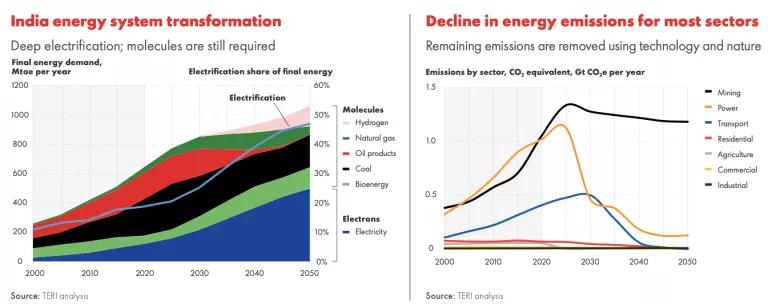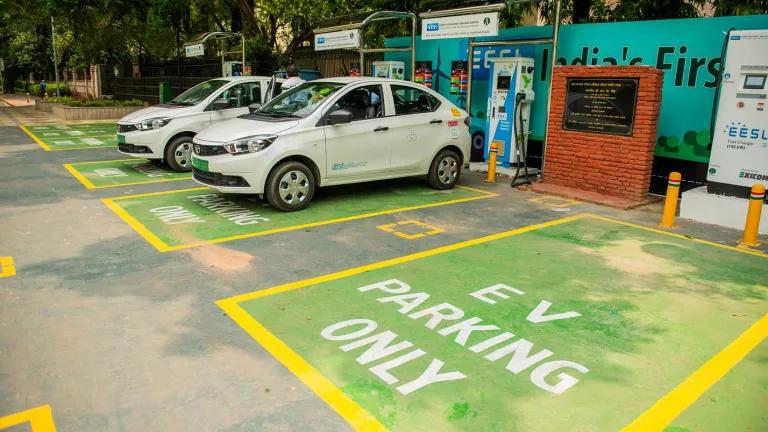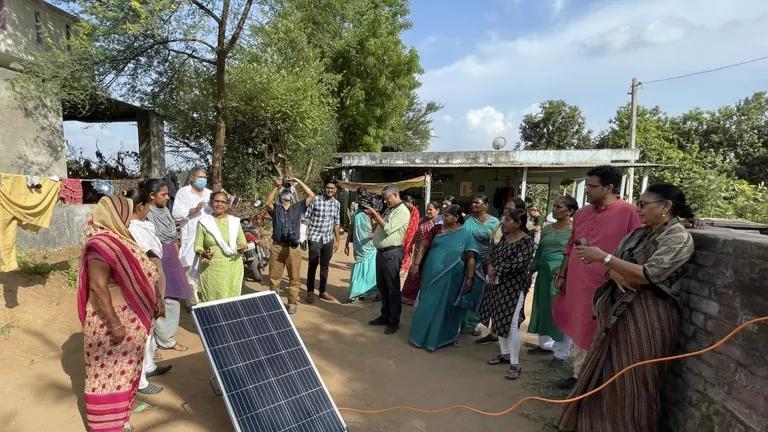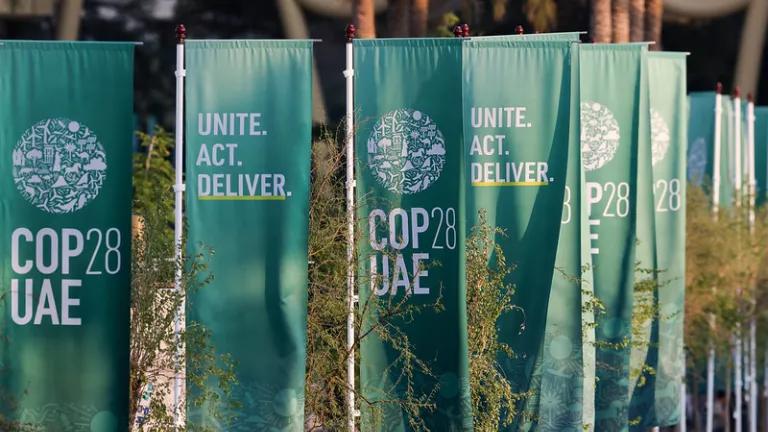Climate Action: All Eyes on India and Net-Zero by 2050
A groundbreaking analysis finds a pathway for India to achieve net-zero emissions by 2050.

Motorcycle and scooter traffic in India.
Co-authored with Polash Mukerjee and Jessica Korsh
A groundbreaking analysis finds a pathway for India to achieve net-zero emissions by 2050. The new report comes out ahead of President Biden’s April 22nd global climate summit, which aims to have the largest emitters ramp up action on climate change. Biden has invited PM Narendra Modi and other world leaders to attend the two-day virtual climate summit. While the world will be watching for much anticipated action by the United States, India will also be of great focus given the net-zero pathway head.
The new report, India: Transforming To a Net-Zero Emissions Energy System, by The Energy & Resources Institute (TERI) and Shell maps out a pathway for India's domestic energy system to move toward net-zero emissions by 2050 and deliver sustainable economic growth. The report finds that India’s ability to achieve net-zero emissions will depend on clear and coherent policies at the national and sub-national level.
The April 22nd climate summit will bring together countries responsible for the majority of global emissions and provide an opportunity to outline how to reduce emissions. The summit is also connected to COVID-19 economic recovery efforts worldwide. The April 22nd climate summit will serve as a prelude to the United Nations Climate Change Conference (COP26) in Glasgow in November. The world cannot solve climate change without India’s active participation. To limit global warming to no more than a 1.5°C increase, the world has to reach net-zero emissions by no later than 2050.
India is one of the few countries on track to meet its Paris Agreement targets. The country is on track to meet its main targets—to reduce emission intensity by 33% to 35% of its gross domestic product (GDP) by 2030 from 2005 levels and achieve 40% of installed power capacity from non-fossil fuels by 2030. The country aims to install 175 gigawatts (GW) of renewable energy by 2022 and 450 GW by 2030—20% more than India’s current electricity capacity of 372 GW. India is halfway toward meeting its 175 GW by 2022 goal, with renewables reaching 89 GW, representing 23% of India’s total installed capacity. The Indian government recognizes that the country needs to do some work toward its target to create an additional three billion ton “carbon sink” by 2030.
Recently, Indian government officials and key experts have been discussing a possible net-zero GHG emissions target for India. Leading market players from Indian industries have already voluntarily come together for the first time to pledge for near zero emissions by 2050 through decarbonization actions.
The International Energy Agency (IEA) concluded in a February report, India Energy Outlook 2021, that it is possible for India to zero out its emissions by the mid-2060s. The conclusion is based on a scenario of the entire planet reaching net-zero by 2070. Under that scenario, the world would not limit warming to the Paris Agreement’s 1.5°C goal. A March issue brief by Council on Energy, Environment and Water (CEEW), Peaking and Net-Zero for India’s Energy Sector CO2 Emissions, notes that for fast-growing economies with a rising emissions trajectory, the choice of a peaking year is as critical as the selection of a net-zero year.
To reach a net-zero emissions energy system by 2050, India needs strong policy and innovation to deploy clean energy technologies on a massive scale according to India: Transforming To a Net-Zero Emissions Energy System. It requires more and faster deployment of large-scale solar, wind and hydro power to enable greater electrification across the country. It also requires the development of new fuels, such as liquid biofuels and biogas, as well as hydrogen produced from electrolysis. Energy efficiency must improve significantly, and carbon removals (from technology and nature-based solutions) will have a critical role in moving toward zero emissions.

India: Transforming To a Net-Zero Emissions Energy System report highlights:
Accelerate clean technologies
- Grow the power sector by a factor of more than four in 30 years, dominated by renewables (around 90%)
- Target 13% hydrogen in final energy, including as a fuel for industry and transport
- Transform bioenergy, with liquid biofuels surpassing petroleum products by 2040 to fuel industry and transport, including hard-to-abate sectors such as aviation
Support energy-efficient and lower-carbon choices
- Invest in processes, technologies and end uses to improve energy intensity per unit of GDP by almost 60% by 2050, a rate of improvement nearly twice historical levels
- Adopt economic mechanisms, such as carbon trading and/or pricing to facilitate reallocation of capital and resources to support commercialization of new fuels and technologies
Remove carbon emissions
- Resort to carbon sequestration to an extent of around 1.3 Gt CO2, using nature-based solutions and /or carbon capture and storage (CCS) to achieve net-zero emissions by 2050
The transition of India’s energy system to net-zero emissions will require fundamentally changing how the country produces and uses energy. The clean energy transition provides opportunities for balanced and sustainable economic development and a better quality of life for all. India has a chance to deliver economic growth that is environmentally sustainable and socially inclusive, rather than seeing issues emerge that have arisen historically in other economies, according to India: Transforming To a Net-Zero Emissions Energy System.
The overwhelming science emphasizes the dire consequences of countries failing to raise Paris Agreement targets. While it will be challenging for India to achieve net-zero by 2050, it is not impossible. Robust action on climate change is essential for advancing low-carbon economies, increasing energy security, and preparing for the worst effects of climate change—as part of COVID-19 efforts to build back better.
Reports
- India: Transforming To a Net-Zero Emissions Energy System (TERI and Shell, March 2021)
- Peaking and Net-Zero for India’s Energy Sector CO2 Emissions (CEEW, March 2021)
- India Energy Outlook 2021 (IEA, February 2021)
Polash Mukerjee is a climate and air quality expert working as a consultant with NRDC based in New Delhi. Jessica Korsh is a climate and health expert working with NRDC as a former Duke Stanback Fellow.




